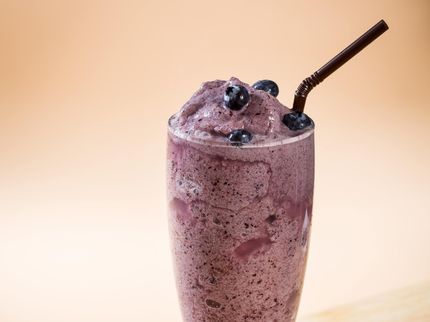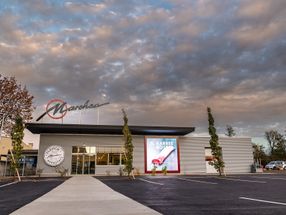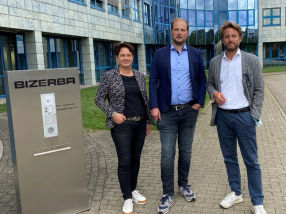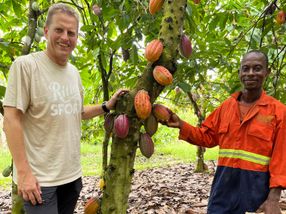Growing quinoa in Europe
In five years large-scale cultivation would be possible
Advertisement
In Germany, quinoa is trendy amongst health-conscious buyers: its seeds are rich in proteins and essential amino acids, it is gluten-free, and has lots of iron, zinc, magnesium and vitamins. To put it briefly: quinoa is extremely healthy. While quinoa seeds are still a niche product in Europe and are hardly cultivated, the plant has been indispensable in South American agriculture for thousands of years. It is mainly due to the adaptation of the plant to the tropical regions with shorter daylight hours. In addition, it can also thrive on the barren high plains of the Andes. In order to be able to grow quinoa (also known as Inca rice) in Europe on a large scale, scientists at Kiel University (CAU) are researching its flowering time behaviour under North German conditions. This year for the first time, they cultivated 350 quinoa varieties in the experimental field of the Institute of Crop Science and plant breeding.
Dr. Nazgol Emrani explained the starting point of the research: "We want to breed a type of quinoa, which thrives in Europe, and thereby offers both an economically as well as ecologically viable alternative to domestic crops." She works as a research associate at the Institute of Crop Science and Plant Breeding, which is led by Professor Christian Jung, and forms part of the priority research area Kiel Life Science. Last year, an international research team led by Prof. Mark Tester (King Abdullah University of Science and Technology, Saudi Arabia) including researchers from Kiel succeeded in decoding the quinoa genome, i.e. the entire genetic information of the plant. This now enables the researchers all around the world to identify the genes, which are important for quinoa breeding. "However, the partners involved in this project from China, Australia, Saudi Arabia and the USA are pursuing different interests", continued Emrani: "In Saudi Arabia, for example, it is vital that the plants can survive extreme environmental conditions like very high temperature and high salinity soil. In Europe, on the other hand, the adaptation to long days and short summers are more crucial. For health-conscious people, especially the high nutritional value of quinoa is interesting. In our project, we want to boost these advantageous properties for the temperate latitudes, by identification of the genetic factors controlling flowering time in quinoa and by introduction of the beneficial genes to the quinoa cultivars by crossing".
Quinoa on the world market
In 2016, approximately 149,000 tonnes of quinoa were produced worldwide, the vast majority in Peru and Bolivia. 1,094 tonnes were sold in Germany alone, making it the second most popular "superfood" in the country, after chia seeds. The largest producers and exporters include Peru and Bolivia. For these countries, the quinoa plant has become an important part of their economy. (Source: The Food and Agriculture Organization, FAO, and Statista)
Genetic diversity and selective breeding
The genetic diversity of the quinoa genotypes is enormous: it can, for example, be short and herb-like, or grow meters high with many branches. Accordingly, the flowering period can also vary significantly. In the Kiel experimental field, there were already mature plants ready for harvest in July. Others were still some months away from maturity even in September. "These plants are not suitable for cultivation in Germany and Europe", said Dilan Sarange, a doctoral researcher in the Kiel project. Here, crops must be ready for harvest by the end of September at the latest, otherwise the weather becomes too unreliable, and there is a danger of seed loss. Additionally, the different growth patterns of the quinoa varieties can limit the commercial cultivation in Europe: "As few branches as possible and a compact panicle (flower cluster) are advantageous for mechanical harvesting", said Sarange.
Despite its long history, there has been hardly any large scale breeding programs conducted so far for quinoa – neither in South America nor in Europe. "In South America, it’s mainly small farmers, who live off quinoa cultivation", added the Master's student Nathaly Maldonado from Ecuador. The wild plant grows in various regions of the Andes – also in nutrient-poor soils – and the seeds can be easily collected for sowing in the following year. The bitter-tasting saponin, which is often bred out in western countries to improve the digestibility, also assists the small-scale farmers as natural plant protection. "Therefore, there is hardly any need for quinoa breeding in the Andean region", said Maldonado.
Prospects for quinoa cultivation in Germany and Europe
Already in the first year of their experiment, the Kiel scientists identified some potential quinoa types for cultivation in Europe. The most promising genotypes will be grown again in the coming year and will be crossed with each other. "We have already found a number of quinoa genotypes, which are suited to the daylight hours in Germany and Europe, and have a short vegetation period – ideally from mid-April until the end of August. Our experiments will allow a large-scale cultivation of Quinoa in Northern Europe already in five years", said Emrani. It will probably take a while longer until agriculture and the food processing industry adapts to this new resource, but "we hope that the potential of quinoa is recognised as quickly as possible", concluded Emrani. The team from Kiel plans to publish their first scientific results in spring 2019.
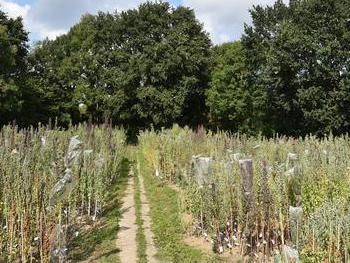
Claudia Eulitz, Uni Kiel



